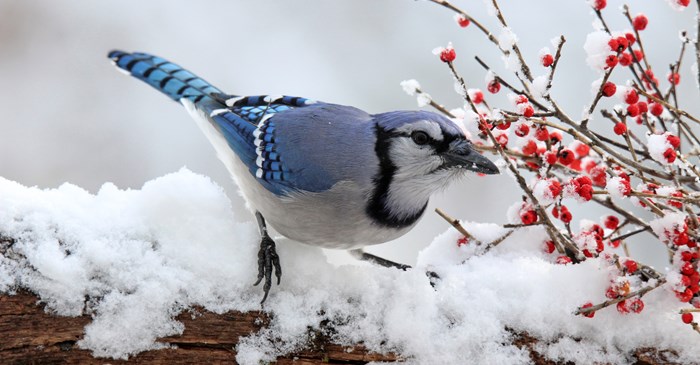In the winter, as feathered friends flock to your feeders, it’s hard not to wonder about what happens to their little, unprotected feet, especially when they cling to snowy branches and metal feeder perches. Do songbirds get cold feet in the winter, and if so, are their toes in danger of frostbite? Or worse?
The short answer is yes. If a songbird would let you touch their feet, you would find they do feel cold in the winter. But unlike humans and other animals, cold feet don't pose a problem for birds. In fact, birds' feet and legs are designed to offer them some protection when the temperature drops.
There are two main reasons that birds aren't affected by cold feet:
1. Blood circulates through the legs and feet of birds very quickly, and blood vessels in this part of the body are positioned closely together. Because of this, blood doesn't have a chance to cool enough in their legs to cause discomfort or distress. Due to this quick circulation, their blood is quickly warmed in their core before being sent back to the feet.
2. Bird legs and feet have very few pain receptors and little fluid. The surface is dry and scaly, with no moisture, which means they don’t have to worry about their feet freezing and getting stuck to metal perches, even on a cold and snowy day.
To give winter birds a helping hand to survive the harsh winter conditions, fill your feeders with a blend that features plenty of high-energy morsels, such as Lyric Fruit & Nut Mix. This premium blend is packed with dried cherries, almonds, pecans and sunflower kernels and is sure to draw a crowd.
